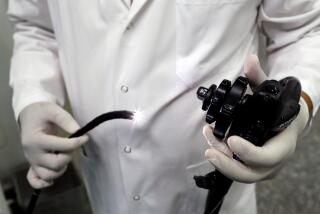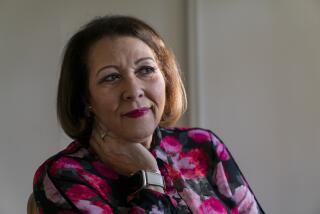Study urges more individual mammogram guidelines
- Share via
Some women need mammograms more frequently than others, and guidelines should reflect those individual risk profiles, according to authors of a new study on the always-controversial issue of screening for breast cancer.
The standard approach, which is based on age alone, has been challenged in recent years by a number of health experts who contend that some women get more mammograms than they need and others get too few. The new paper, published Monday in the Annals of Internal Medicine, argues for a more complex approach to mammography based on personal risk factors such as age, breast density, family history of breast cancer and even a woman’s personal preference.
Most medical organizations, including the American Cancer Society, recommend that healthy women undergo screening every one to two years beginning at age 40 regardless of risk factors. In 2009, the U.S. Preventive Services Task Force recommended a more relaxed schedule: that screening for women ages 40 to 49 should be based on individual risk factors and women ages 50 to 74 should be screened every two years.
Although some cancers would be missed, the task force noted that over-screening carried a high toll on others, through financial costs, exposure to radiation, anxiety and unnecessary medical tests or surgeries resulting from false-positive mammograms. Many doctors expressed dismay at the task force suggestions.
The new study attempts to strike a balance, with more nuanced guidelines — but they will require extra forethought on the part of doctors and their patients, the authors said.
Previous guidelines “are trying to make one-size-fits-all, while we think of this as a personalized approach,” said Dr. Steven R. Cummings, senior author of the study and senior researcher at the California Pacific Medical Center Research Institute, part of the Sutter Health network.
Such an approach is possible because of new research showing that the risk of cancer is higher with dense breast tissue, which has less fat, Cummings said.
“Breast density is the strongest risk factor that we know of, stronger than age and family history,” he said. “We’re able to analyze the relationship between breast density and the risk of getting breast cancer very, very accurately.”
The study was based on a computer model comparing the lifetime costs and health benefits for women who got mammograms every year, every two years, every three to four years or never. The model also weighed individual risk factors and assumed six different outcomes, including remaining healthy, developing some type of breast cancer or dying.
The authors looked at how many extra mammograms over 10 years would be needed to prevent one death from breast cancer in those having mammograms every year or less frequently.
The analysis showed, for example, that women ages 40 to 49 with high breast density and either a first-degree relative (which includes parents, children and siblings) with breast cancer or a prior breast biopsy would benefit from mammography every two years. This accounts for about 20% of women in this age group.
But for women ages 50 to 79 with low breast density and no other risk factors, mammography every three to four years was cost-effective.
All women should have an initial screening at 40, the study concluded, to assess the density of their breasts.
“The most important controversy is whether to start mammography at age 40 or not,” Cummings said. “The conservative groups have said wait until 50. The authors of this analysis say start at 40 because, at age 40, you should know your risk of breast cancer. It’s not necessarily the age to start regular mammograms, but it’s a good age to know your risk.”
The model does not include genetic information because only certain variants of two genes are known to contribute significantly to risk, he said. Women with those variants should follow specific screening guidelines. The new model, he said, “is for everyone else.”
A woman’s feelings about screening should also be taken into account, the authors said, because people react differently: Some may be made more anxious than others by false-positive mammograms; some may find having more mammograms reassuring.
The study presents a rational, scientific approach to screening mammography, said Dr. Diana Petitti, a professor of biomedical informatics at Arizona State University who has studied mammography guidelines.
“Conceptually, I think the U.S. Preventive Services Task Force and groups that are thinking about screening are all going in the same direction,” she said. “The model of one-size-fits-all that permits you to decide this person should get screened and this person shouldn’t get screened is an artifact of the past.”
It’s unclear whether doctors will, on their own, move to a more individualized approach or wait for a mandate from medical leaders. The model doesn’t answer every question, such as how risk might change after menopause when the density of breast tissue typically changes, noted the authors of an editorial accompanying the study led by Dr. Jeanne S. Mandelblatt of Lombardi Comprehensive Cancer Center in Washington, D.C.
Moreover, personalization will require more deliberation on the part of doctors and patients, Petitti said.
“It’s easier for the public to understand and for doctors to implement a recommendation where you say, ‘You’re 40. Let’s screen,’ ” she said. “This challenges people to understand probability, and that’s going to be hard to do.”






